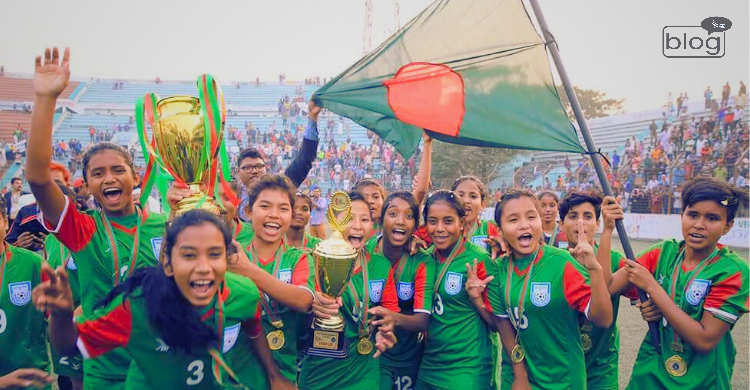In Bangladesh, people have traditionally believed that men rule the sports world. But with the advancements of society, women participation has increased in sports along with other sectors. This blog will discuss the participation of Bangladeshi women in sports and the hurdles they face.
The historical participation of women in sports has been impeded by cultural preconceptions and societal restrictions. Women’s access to physical activities outside the home was restricted by traditional gender norms, which frequently restricted them to domestic domains. Women who wanted to do sports were often discouraged by modesty concerns and society standards of femininity.
In spite of these challenges, Bangladeshi women athletes have demonstrated incredible perseverance.
In Cricket, Bangladeshi cricketers have made histories. In 2007, Bangladesh Women Cricket team formed.
The Women’s Cricket team got ODI status in 2011. The Tigress won the Women’s Asia Cup in 2018. Female cricket players such as Rumana Ahmed and Salma Khatun, have inspired a new generation of players to follow their passion for the sport.
Women are becoming more prevalent in sports outside of cricket, including archery, football, volleyball, swimming, and running.
In football, the women’s team has shown tremendous success. Journey started in 2003, when FIFA urged to prioritize women participation in football in South Asia.
Now Bangamata Sheikh Fazilatunnesa Mujib Gold Cup is held to encourage young girls to take part in football and make new female footballers. Three trophies are won by Bangladesh Women’s football team including SAFF championship. Sabina Khatun, Krishna Rani Sarkar, Sirat Jahan Sopna are some of the gems of the National football team.
Female athletes get less attention than male athletes and Shirin Akhter is the most famous female athlete. She is the fastest woman of Bangladesh with a record of 11.99s. She has played in the 2016 summer Olympics for the first time and has 4 bronze medals for the country.
The talent and potential of women in traditionally male-dominated sports have come to light because of the accomplishments of athletes like Shirin Akter in archery, Fatema Mujib in shooting and Mabia Akhter in weightlifting are prominent athletes.
But problems still exist. The complete involvement of women in sports is still hampered by societal stereotypes, limited facilities, and restricted access to resources. Many female athletes struggle financially and lack access to adequate training facilities. Furthermore, some families continue to be discouraged from supporting their daughters’ sports endeavors due to cultural hurdles and preconceptions.
It will take coordinated efforts from all parties involved to address these issues. More funding must be provided by governments to create programmes for women’s sports and upgrade facilities. Girls’ participation in sports should be encouraged at educational institutions, and they should have equal access to training and competition. Changes in perceptions are also greatly influenced by media depiction.
In addition, developing talent and creating a positive atmosphere for women in athletics require community service and grassroots projects. In order to create inclusive athletic ecosystems, it is equally necessary to empower female officials, coaches, and administrators.
Bangladeshi sports women have won many stages in spite of cultural and societal differences and hurdles. Now they have made a lot of progress but there are still many unturned opportunities out there. If they get enough facilities and cooperation, female athletes can make use of their full potential and serve the country. Bangladesh can promote female players by renewing social policies and nurturing an inclusive society.
To read more blogs, click here.
Writer :
Nusrat Jahan Sonia,
Intern,
Content Writing Department,
YSSE.

